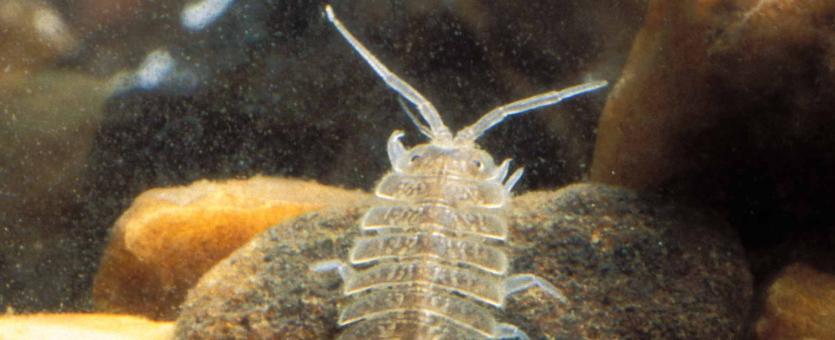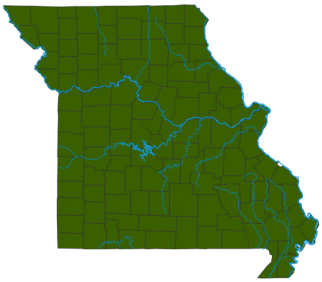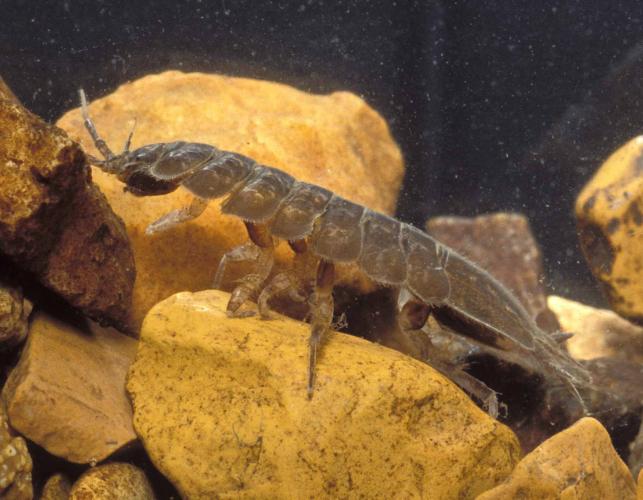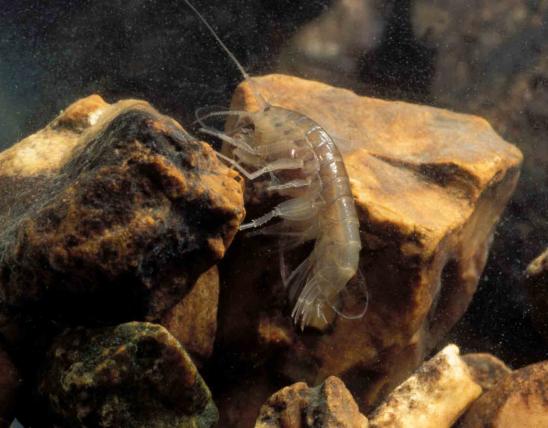
Everyone knows about terrestrial sowbugs and pillbugs, but many isopod species are aquatic. Missouri has several isopods that live in streams, ponds, rivers, and caves. Isopods are usually dark brown or gray, flattened top-to-bottom, many-segmented, with head, thorax, and abdomen not immediately distinct; eyes compound and not on stalks; 2 pairs of antennae (one pair large, the other pair tiny); 7 pairs of walking legs that are all pretty much the same (iso- means “same” or “equal,” and pod means “foot”); 5 pairs of 2-parted pleopods (gills), each protected by a platelike operculum; the rear end of the body (last abdominal segment) with uropods and a telson (analogous to the “tail fan” of a crayfish). Some of the aquatic species look almost exactly like the terrestrial isopods known as sowbugs, pillbugs, or roly-polies.
Some common species: Asellus spp. and Caecidotea spp. are some of the most common freshwater isopods. Some species are whitish or pale-colored cave-dwellers.
Similar species: Amphipods (scuds, or sideswimmers) are flattened side-to-side, not top-to-bottom. Freshwater shrimp have a carapace covering the head and upper body.
Adult length: about ¼ to ¾ inch.

Statewide.
Habitat and Conservation
Freshwater aquatic isopods are common in water rich with organic materials. They crawl slowly over rocks, logs, and other submerged objects. Different species prefer different habitats, including standing water, streams of various types, caves, and rivers. Many hide under rocks and among debris at the bottoms of pools. Some of the most common species tolerate high amounts of pollutants and be almost the only thing alive in a pool; their presence in a stream can indicate a lowered water quality.
Food
Aquatic isopods are scavengers, omnivores, and herbivores. Mouthparts are for chewing. Common foods include decaying plant material, such as dead leaves, and other refuse. They probably also eat the algae and other tiny organisms that coat submerged rocks, logs, and so on. Some chew on living plants.
Status
Although several aquatic isopods are quite common in Missouri, approximately 9 are listed as Missouri species of conservation concern. At least 7 of those are cave isopods, whose populations are vulnerable because of an extremely limited range (often, they are confined to a single cave system) and small numbers. In cases like these, pollutants from a single fertilizer spill, the accumulated siltation from surface earthworks, or too much agricultural runoff, could wipe them out.
Life Cycle
Like most other crustaceans, young isopods hatch from eggs and look like tiny versions of the adults. As they grow, they molt (shed their skins) in two phases: first the back half, later the front half. Mature females have special appendages under their bodies that form a brood pouch, the marsupium (the same term that is used for opossum and kangaroo pouches). The female lays her eggs directly into the marsupium; as the young develop, they undergo their initial molts within its safety.
Human Connections
Aquatic isopods, like many other freshwater invertebrates, are used for gauging water quality. Biologists conduct censuses of the organisms living in streams. Based on relative numbers of different species, they can determine if pollutants, siltation, and other factors are affecting stream health.
Ecosystem Connections
Freshwater isopods are important scavengers, contributing to the decomposition of plant and animal remains and helping clean the water. They are also a favorite food of fish and many other aquatic predators.

































